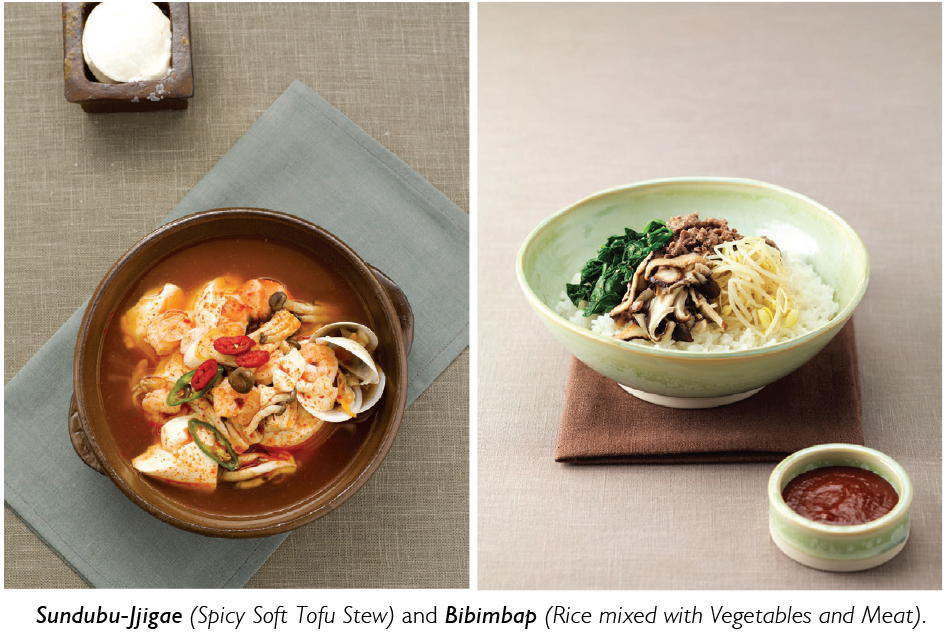
Presented in association with Korea Tourism Organization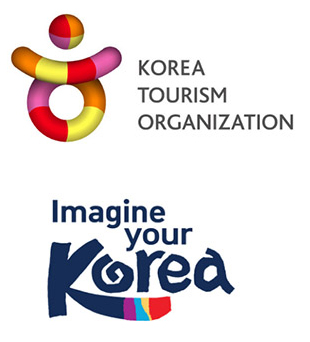
With approximately 5000 years of culinary history, the cultural importance of food in Korea, extends well beyond nourishment. When friends and colleagues greet each other in the morning, they ask, “Did you eat breakfast?”. This is considered as much of a greeting as it is an inquiry.
Korean traditional cuisine or Hansik represents the metaphysical view of Koreans – the theory of yin and yang (representing earth and heaven respectively) and the interaction between the two resulting in dynamic energies represented by the five elements that make up the universe (i.e., water, fire, wood, metal and earth). The traditional Korean table consists of dishes of five colours, namely, green, red, yellow, white, and black, which represent the five elements and also the five tastes of spicy, sweet, sour, bitter, and salty. It is believed that a combination of dishes with these olours provides nutritional balance. A good example is bibimbap, which is rice mixed with assorted vegetables of different colours, egg and gochujang (red pepper paste).
The basics for Korean cooking include Kimchi which has been praised for its anti-carcogenic properties and its nutritional value; Gochujang (red pepper paste), a traditional condiment made by fermenting a mixture of chilli pepper and other ingredients; Deonjang (Soybean paste) and Ganjang (soy sauce).
The main cooking techniques used by Koreans are grilling, boiling, pan-frying and steaming which ensure that the food is healthy and easily digestible.
Sundubu-jjigae is a stew of soft tofu and clams in a spicy broth. Soft tofu is made with soaked soyabean and is soft in texture and sweet in taste.
Typically assembled and cooked directly in the serving vessel, sundubu-jjigae is generally quite spicy and has been described by the New York Times as “the ideal winter meal”.
Various marinated and/or cooked vegetables and stir-fried meat or shitake mushrooms are tossed thoroughly with cooked rice with the addition of gochujang (red chili pepper paste) as a seasoning condiment.
Though a common meal in every Korean household, Bibimbap is most famous in the city of Jeonju, where the Jeonju Bibimbap Festival is held with great fanfare, every year.
For Episode 4 in our Korean culinary series - Korean Cooking for Indian Homes, tune in to https://www.youtube.com/user/InKoCentre on Wednesday, 10 March 2021 at 6.00 p.m. IST.
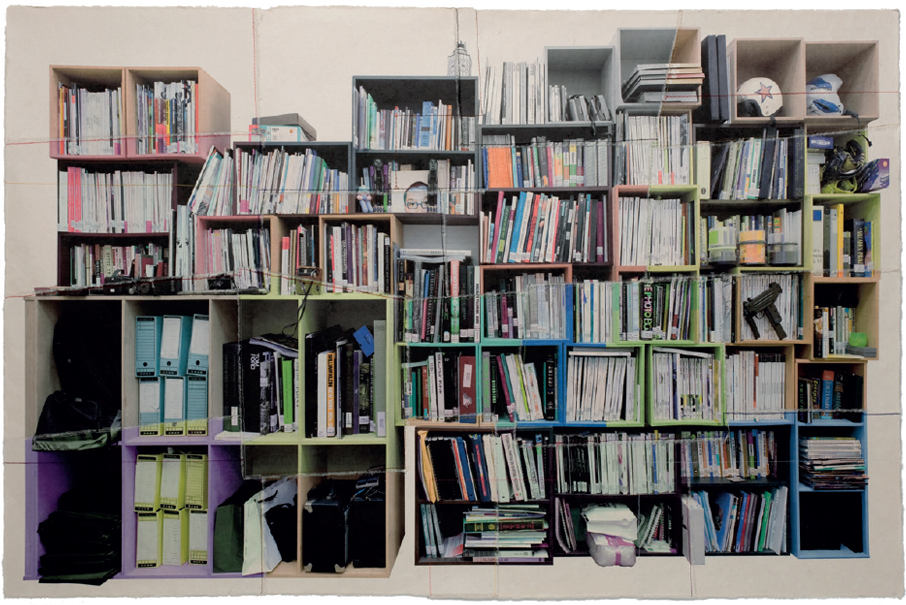
Chaekgado or chaekgeori refers to still-life paintings, mainly books and other related objects such as decorative bibelot, antiques, stationery and flowers. This type of paintings were populary produced in the late Joseon period. Written records note that this form of painting was produced, chiefly under the patronage of King Jeongjo (1776-1800), by court painters. Chaekgado, which was mostly images of a study in King Jeongjo's time, later came to be accentuated with antiques and sumptuous ceramic vases.
With real rather than imagined objects depicted, Chaekgado has evoked great curiosity among researchers, scholars and painters, providing an invaluable window to the social norms of the Joseon period in Korean history.
Lim Soosik's photographic series constitutes a contemporary version of Chaekgado. His Chaekgado project is characterized by the deconstruction and construction of perspective. He photographs the bookcases in several parts and from different points of view. The fragmented images are then printed on Korean traditional paper, Hanji, which the artist assembles by hand-stitching with needles. Through this process of photo-collage the completed artwork not only obtains a particular visual distortion but also turns into a unique piece that a normal reproductive photographic work cannot attain. Just as a bookcase that is being filled, book by book over a long period of time, Lim Soosik's work is assembled piece by piece, carrying a unique value, in terms of time, space, presence and absence, memory and identity.
Graduated from Chung-Ang University (BFA / MFA)
Solo Exhibitions
2020
Document-Higasikawa Chosun Middle School, Gallery Jinsun, Seoul, Korea
2018
Babe, Seohakdong Sajinkwan, Jeonju, Korea
2017
Chaekgado, The Museum of Photography, Seoul, Korea
LIM SOOSIK’S PHOTOGRAPHY, Gallery 30, Seoul, Korea
Landscape of Desire, Gallery Meme, Seoul, Korea
2016
The resonance of tradition – Chaekgado, Suwon Art Center, Suwon, Korea
2014
Chaekgado, Galería PazYcomedias, Valencia, Spain
Chaekgado, Seoul Metropolitan Library, Seoul, Korea
Chaekgado, Gallery Jinsun, Seoul, Korea
2013
Chaekgado, Gallery D, Hongcheon, Korea
Chaekgado, Galería Saro León, Spain
Image+X=? (X=Book), Boroomsan Museum, Gimpo, Korea
Sèmiotique du dèsir, Space CAN Beijing, China
2010
Chaekgado, Gallery Jinsun , Seoul, Korea
The Library of Babel – All and Nothing, Bukchon Art Museum, Seoul, Korea
2009
Room.K, SONO FACTORY, Seoul, Korea
2008
Chaekgado, Gallery On, Seoul, Korea
2007
Essay, Art Space Geonhi , Seoul, Korea
Click on www.inkocentre.org/Virtual_Connect_Cultural_Collaborations.html to view this exhibition at Prism - InKo Centre's virtual gallery, on Friday, 19 March 2021 at Prism, 6.00 p.m. IST.
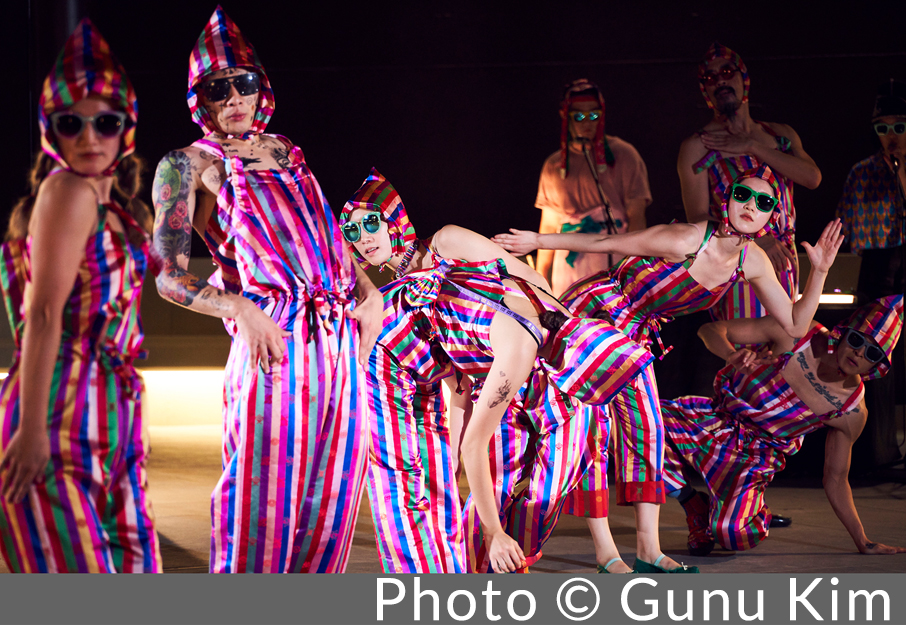
In association with
supported by
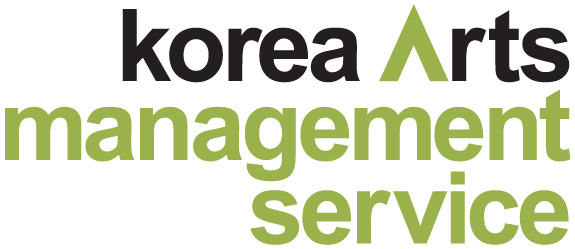
Ambiguous Dance Company was founded by choreographer Kim Boram and dancer Jang Kyeongmin in 2008. The name of the group describes the “undefinable and ambiguous” characteristics of their dance style. Escaping from genres and preconceptions, the group expresses what is in their hearts through bodily movement and music. Rather than focusing on delivering an artistic message or meaning, the Company intends to convey the true nature and purity of humanity, believing that the bodily expression of music and dance form the most accurate and authentic language of artistic expression.
Born in Korea, Boram Kim entered the field of contemporary dance unconventionally. Working as a back-up dancer for 10 years, he began to wonder about how dance speaks to the audience and with passion and ambition, he began to develop his own choreography.
Kim established his own dance company called Ambiguous Dance Company in 2007. Since its formation, he has created three works a year on average. To Kim, creating dance works helps excise uncertainties engrained within him. In the process of creation, stories and answers to these uncertainties are existentially and inherently revealed. Kim first begins this process by choosing music with which to work. Interpreting the music, movements begin to take form in his mind, intertwining with melodies and rhythms, like a shuttle weaving across a loom.
In Kim’s work, he seeks to return to the core of music and dance - pursuing sound before music itself and body movement before dance, through which one can find distinct musical interpretation. Boram Kim hopes to convey intimate communication, harmonizing music and dance.
Click on www.inkocentre.org/Virtual_Connect_Cultural_Collaborations.html to view this exhibition, on Thursday, 25 March 2021 at 6.00 p.m. IST.